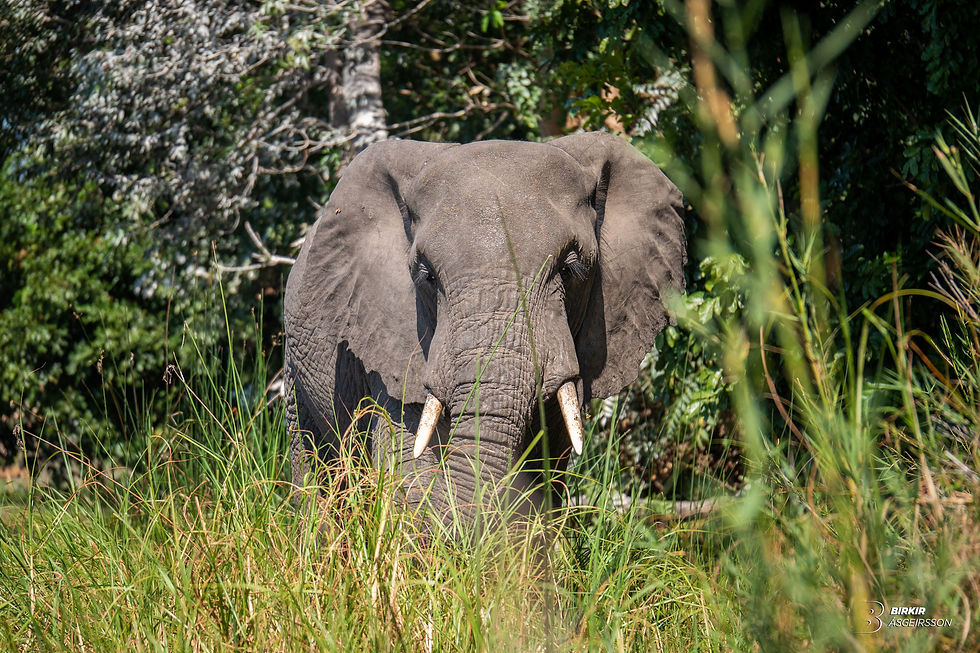The Future of VFX As We Know It
- Birkir Asgeirsson
- Jul 26
- 3 min read
Updated: Nov 16

In 1993, the film Jurassic Park revolutionized cinema. It marked a turning point where visual effects (VFX) began to overtake animatronics as the dominant force in creating cinematic spectacle. The once-reliable army of puppet makers, mechanical engineers, and foam latex sculptors saw their skills slowly phased out by digital artists. It was the beginning of a mutation in filmmaking, a shift from the physical to the digital.
Today, we stand at the beginning of another mutation: the rise of AI in the VFX industry.

The Second Mutation: From Manual to Machine
Visual effects have always been a blend of creativity and technology, but until recently, they remained a heavily manual craft. Artists would spend weeks, sometimes months, rotoscoping, tracking, compositing, and simulating pixels into perfection. Now, AI tools are learning to handle many of those tasks automatically.
From automatic roto and object removal, to AI-generated environments and 3D models, the VFX pipeline is being rewritten in real time. What once took a team of artists days to create can now be done in minutes, at least on the surface.
Generative tools like Runway, Pika, and Sora are pushing boundaries further. They promise fully AI-generated shots that look like something straight out of a big-budget film. Feed the model a prompt, fine-tune a few settings, and the algorithm spits out a shot complete with lighting, composition, and even camera movement.
But this isn’t magic. It’s mutation.
Cheaper Shots, Longer Iterations
One of the biggest pros of this AI mutation is cost. Producing a single VFX shot traditionally could run into the tens of thousands of dollars. Now, that same shot can be generated for a fraction of the cost. Because while AI tools can produce results fast, they don’t always produce exactly what you want on the first try. Or the second. Or the tenth.
Unlike traditional VFX, where artists have surgical control over every pixel, AI-based workflows often require trial and error. It might take dozens of generations to get one shot right, and even then, you may need to manually tweak it in post or blend it with traditional techniques. So while the cost per iteration is low, the time cost of iteration can stack up fast.
Pros of the AI-Driven Future
Cost Efficiency: Smaller studios and indie filmmakers can now achieve high-end visuals without million-dollar budgets.
Speed: Rapid prototyping and concept visualization are faster than ever.
Accessibility: Artists without deep technical knowledge can participate in the VFX space through intuitive AI tools.
Automation of Repetitive Tasks: Roto, cleanup, and matchmove, once dreaded tasks, are becoming near-instantaneous.
Cons and Challenges
Loss of Craftsmanship: Just as animatronics artists saw their careers vanish, traditional compositors and 3D artists may find themselves obsolete unless they adapt.
Inconsistency: AI can be unpredictable. Getting the right result may take many iterations, and even then, results can lack nuance.
Creative Control: Artists are used to precision. With AI, you’re often "suggesting" rather than controlling.
Ethics and Job Displacement: Entire departments could be reduced or replaced, leading to job insecurity across the industry.
What’s Next?
We’re not witnessing the death of VFX. We’re watching it evolve.
Just like animatronics didn’t completely disappear, they adapted and became part of hybrid workflows, traditional VFX isn’t going anywhere just yet. But the role of the artist is shifting. The future VFX professional might be part artist, part prompt engineer, part AI wrangler.
Studios will still need humans to curate, guide, correct, and composite the final result. The skillset is evolving from crafting every detail manually to directing the machine to do so, often imperfectly, and then refining the outcome.
The tools are changing. The timelines are tightening. The expectations are growing. And once again, just like in 1993, the industry is being forced to mutate.
The only question left is: will you adapt?
Author’s Note: I’m a VFX artist living in the middle of this transformation. It’s exciting. It’s terrifying. But most of all, it’s inevitable.
